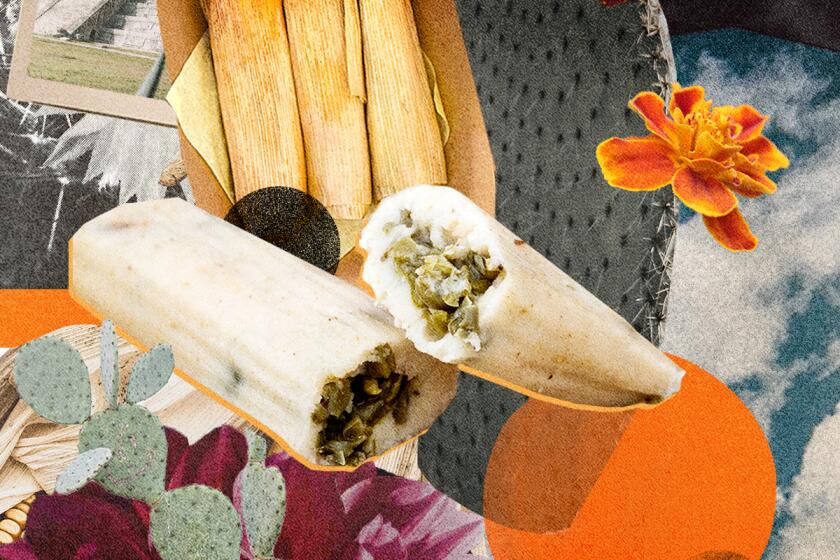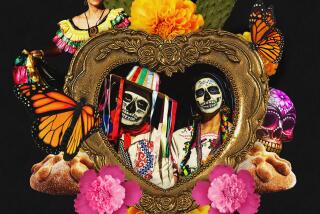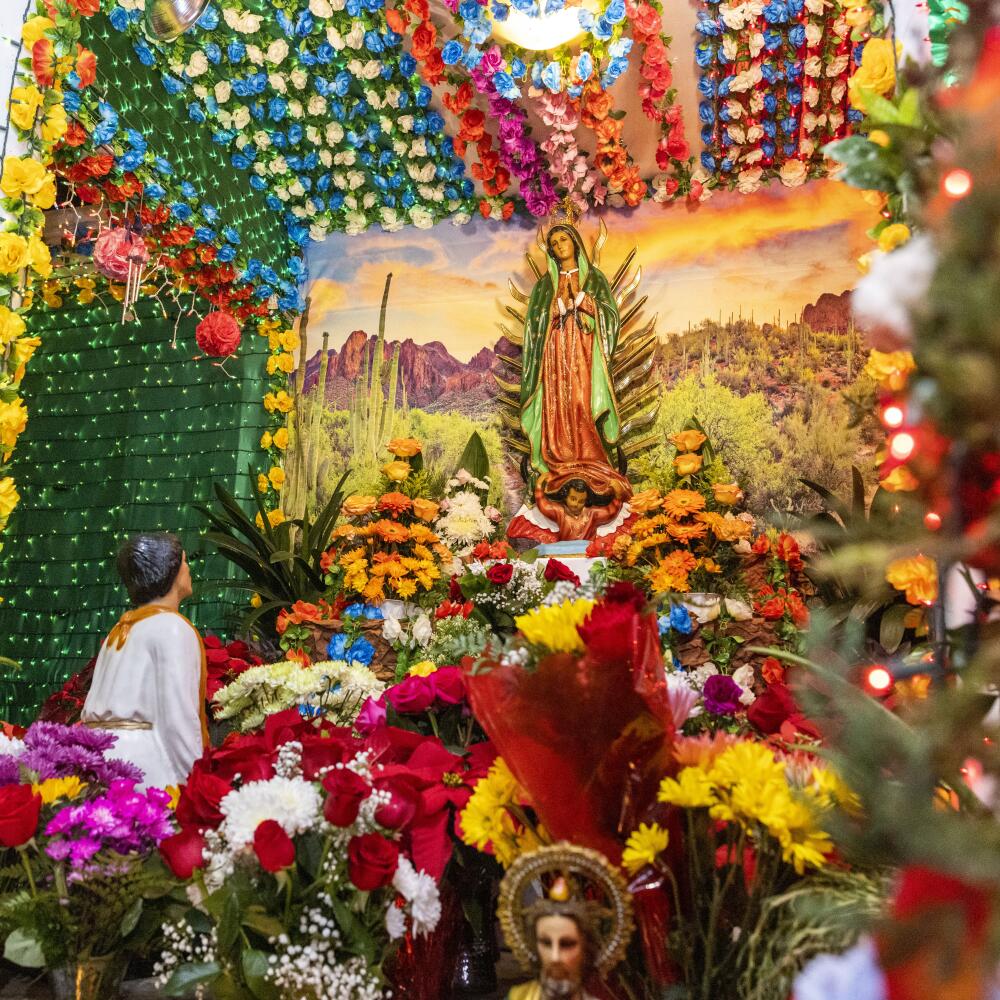
Dec. 12 marks a special day for Catholics, and for those of Mexican descent, it’s one of the most important holidays of the year.
Across the U.S., worshipers celebrate el Día de la Virgen de Guadalupe. They fill churches, clutch rosaries in prayer, adorn altars and join street processions, much like the traditional customs of their home country.
In Santa Ana, hundreds of people paid homage by visiting the home of Luis Enrique Cantabrana, who every year turns his house into an over-the-top shrine in honor of the Mexican patron saint — a brown-skinned, Indigenous vision of the Virgin Mary that Catholics believe appeared to Juan Diego Cuauhtlatoatzin in 1531.
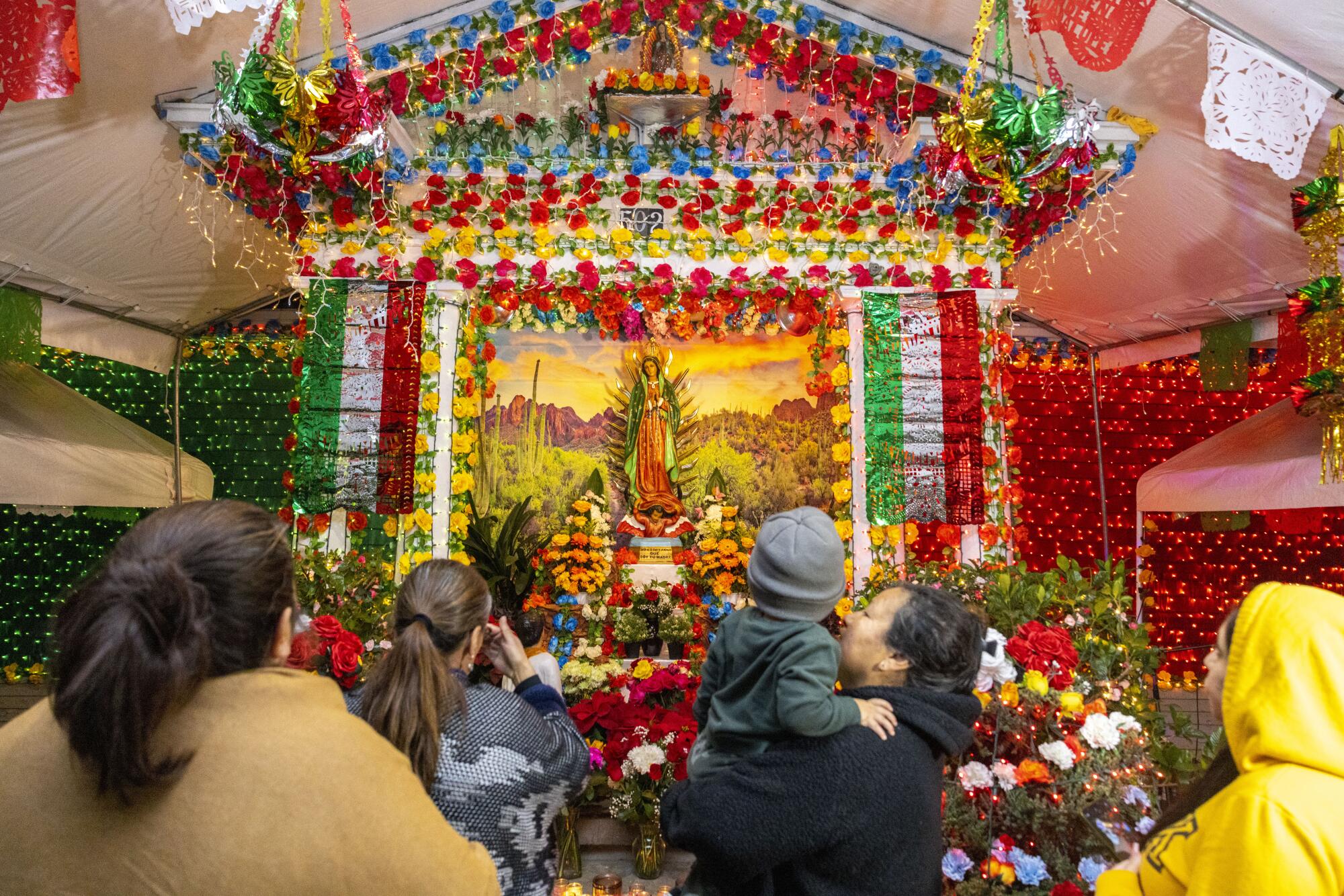
At the Monday night celebration, 7-year-old Emily Navarro waved her red Mexican folklórico dress as she spun her tiny body in front of a 4-foot-tall Virgen de Guadalupe.
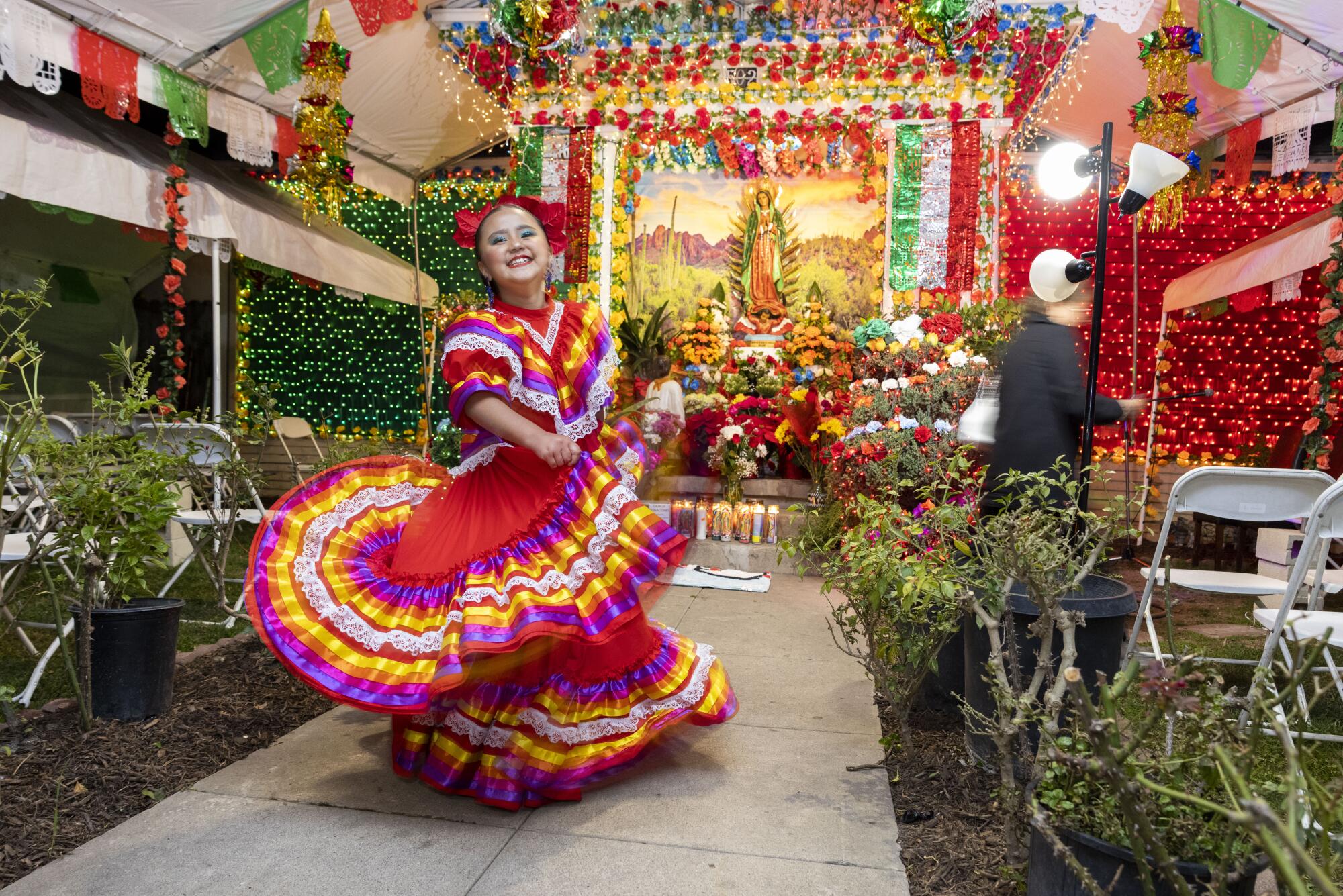
“It all started with a few decorations, a couple of people and some lights,” said Cantabrana, who started the display after feeling nostalgic about the celebrations back home in Nayarit.
Learn about Día de las Velitas and why it’s essential for Colombians. Get ready to be surprised by a Puerto Rican asalto navideño or enjoy a glass of cola de mono with your Chilean friends.
More than 25 years later, those few decorations have turned into a huge gathering of neighbors who squeeze under a canopy that spills onto the sidewalk. Rows of chairs face the front steps of Cantabrana’s house where the shrine of the Virgen de Guadalupe welcomes the crowd. The altar is surrounded by candles, a baby Jesus statue, roses and poinsettias lit by thousands of tiny red, green and white lights, the colors of the Mexican flag.
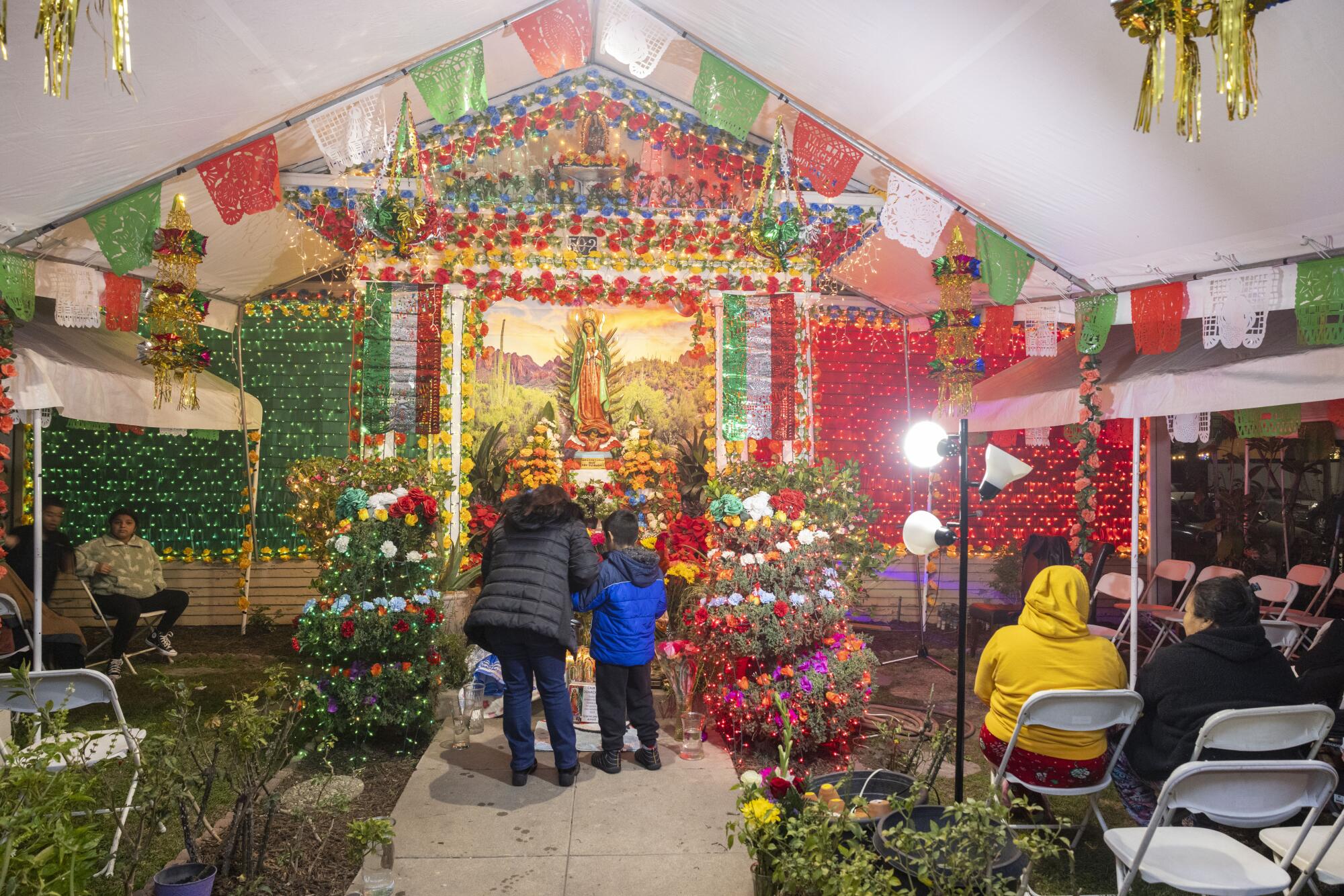
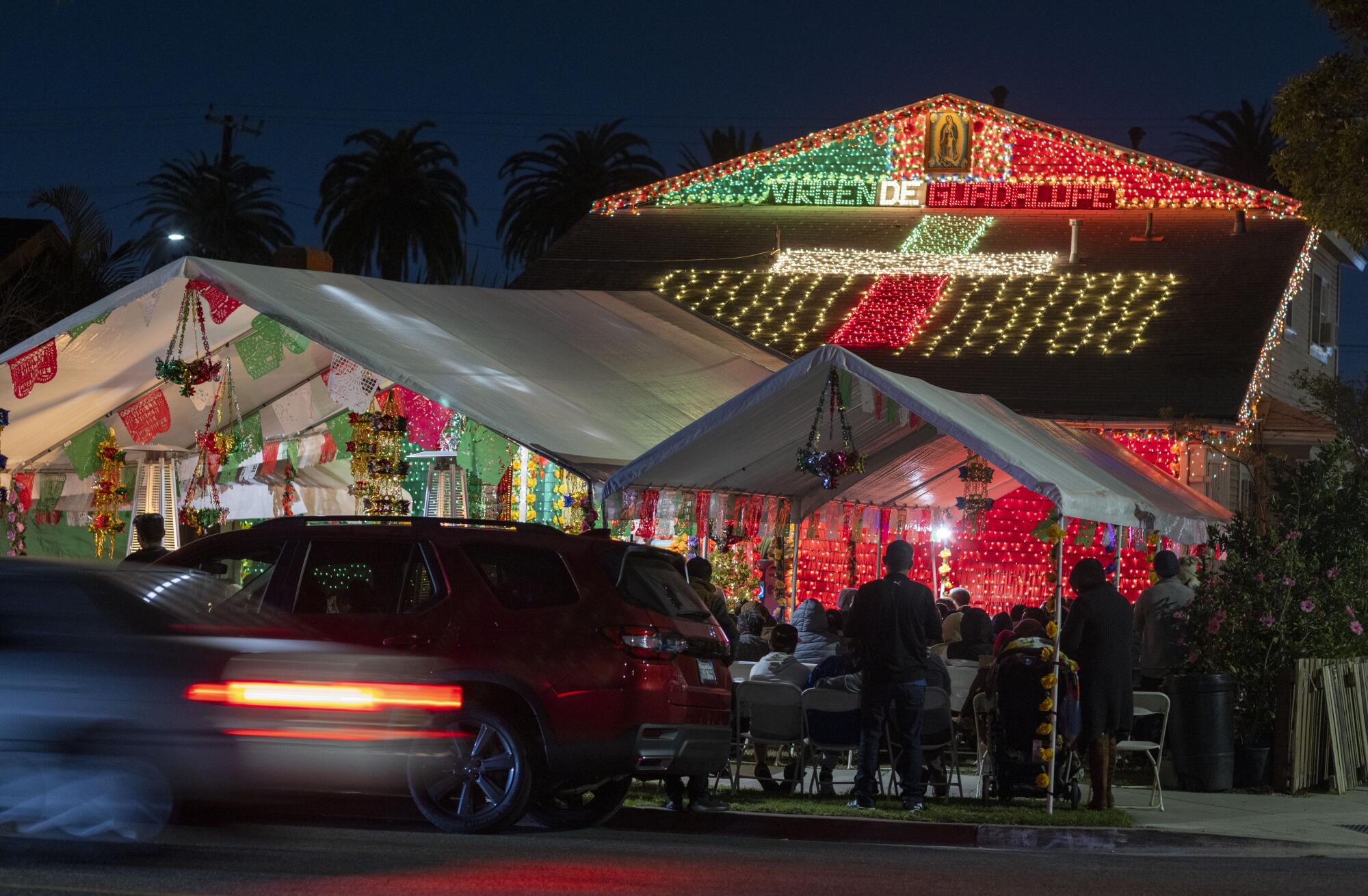
“People always tell me there are no other altars like this one and every year it gets better,” Cantabrana said proudly.
It takes him about a month to set up for the annual celebration with help from family, his compadres and teens from the local soccer club he coaches, he said.
The eve of el Dia de la Virgen is a busy night for Cantabrana. When he’s not passing out bottled water, he’s waving his phone around as he livestreams the event for the world to see. He is heard encouraging people to sing aloud. “The Virgen helps all of us come together.”
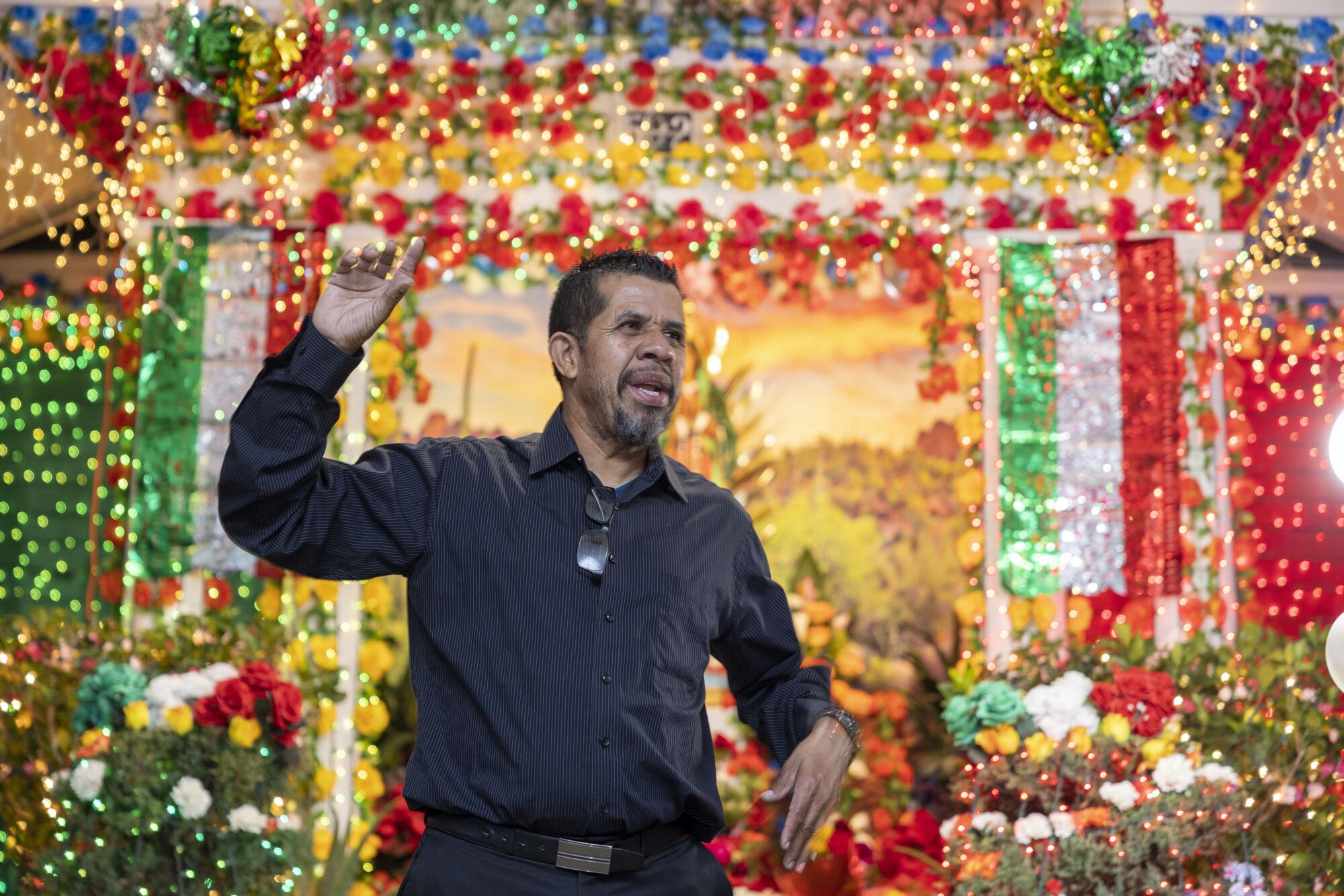
Alejandro Navarro, the father of the young folklórico dancer, has been coming to the shrine with his family for years.
“This house is special for a lot of people. [Cantabrana] has been doing this for generations not only teaching kids about this but also about soccer and life,” said Navarro, who was coached by Cantabrana when he was a teenager. “I want [my daughter] to keep this tradition alive. It’s a beautiful thing.”
For modern-day chefs who are descendants of Latin American cuisine, room exists for traditional recipes to bend and crack, opening up possibilities for something new and reflective of today’s culture.
Under the tent, a voice over the microphone invites people to join in prayer. Some clutch rosaries in their hands while others step up to gently place flowers and take selfies with “La Lupita.”
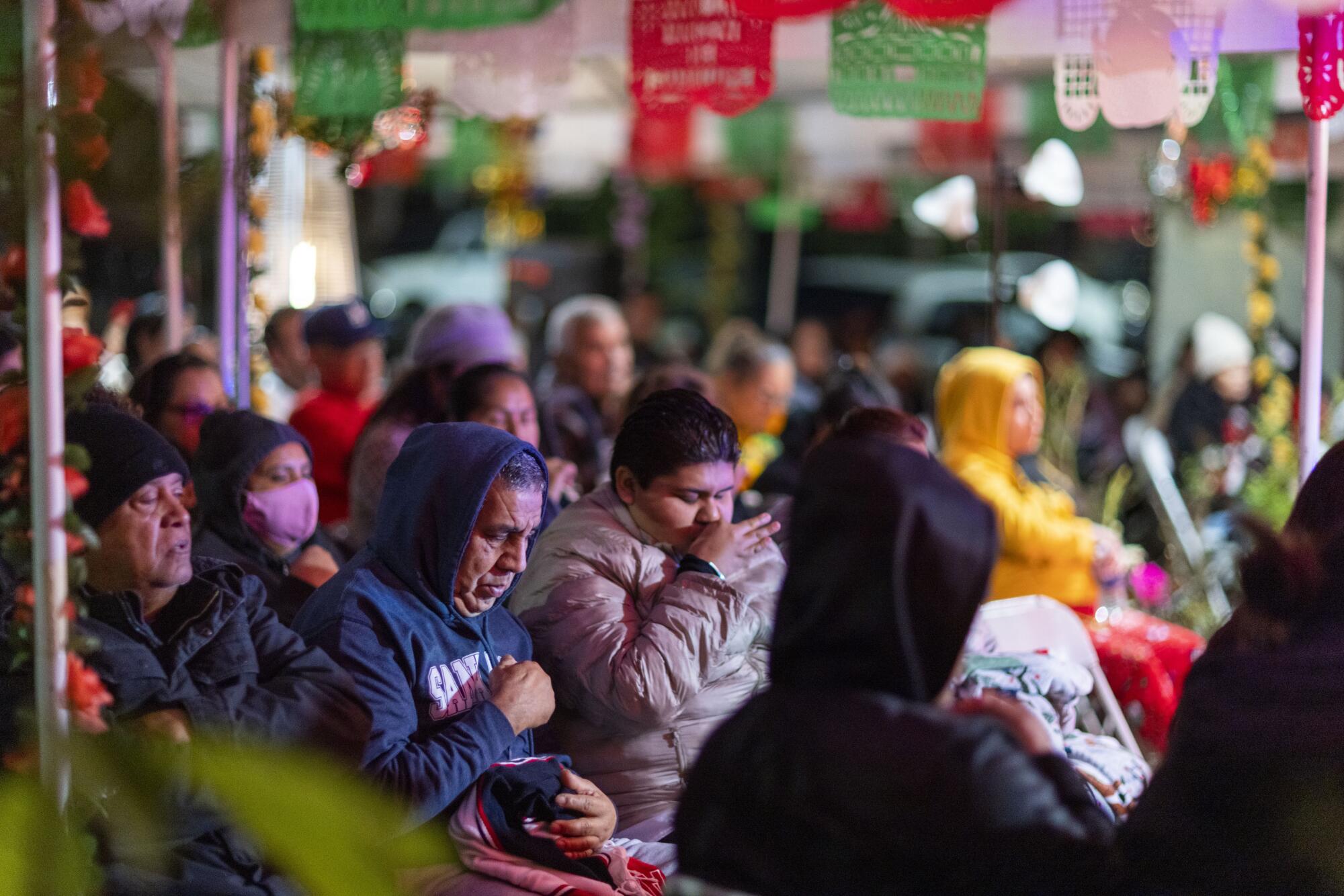
Ynes Santiago visited the shrine with her son Omar who came dressed as Juan Dieguito. “It’s the first time I come here and I love it. They really know how to celebrate the Virgen here,” said Santiago, a Santa Ana resident originally from Oaxaca. “We are so glad and thankful to be here.”
As the evening progresses the crowd spills onto the sidewalks. Across the street people are singing “La Guadalupana” while fireworks are heard in the distance. A neighbor at a nearby home plays a Mexican banda version of “Las Mañanitas,” a traditional Spanish-language birthday song, via a loudspeaker.
Someone yells, “Que Viva La Virgen!” and the crowd responds, “Que Viva!”
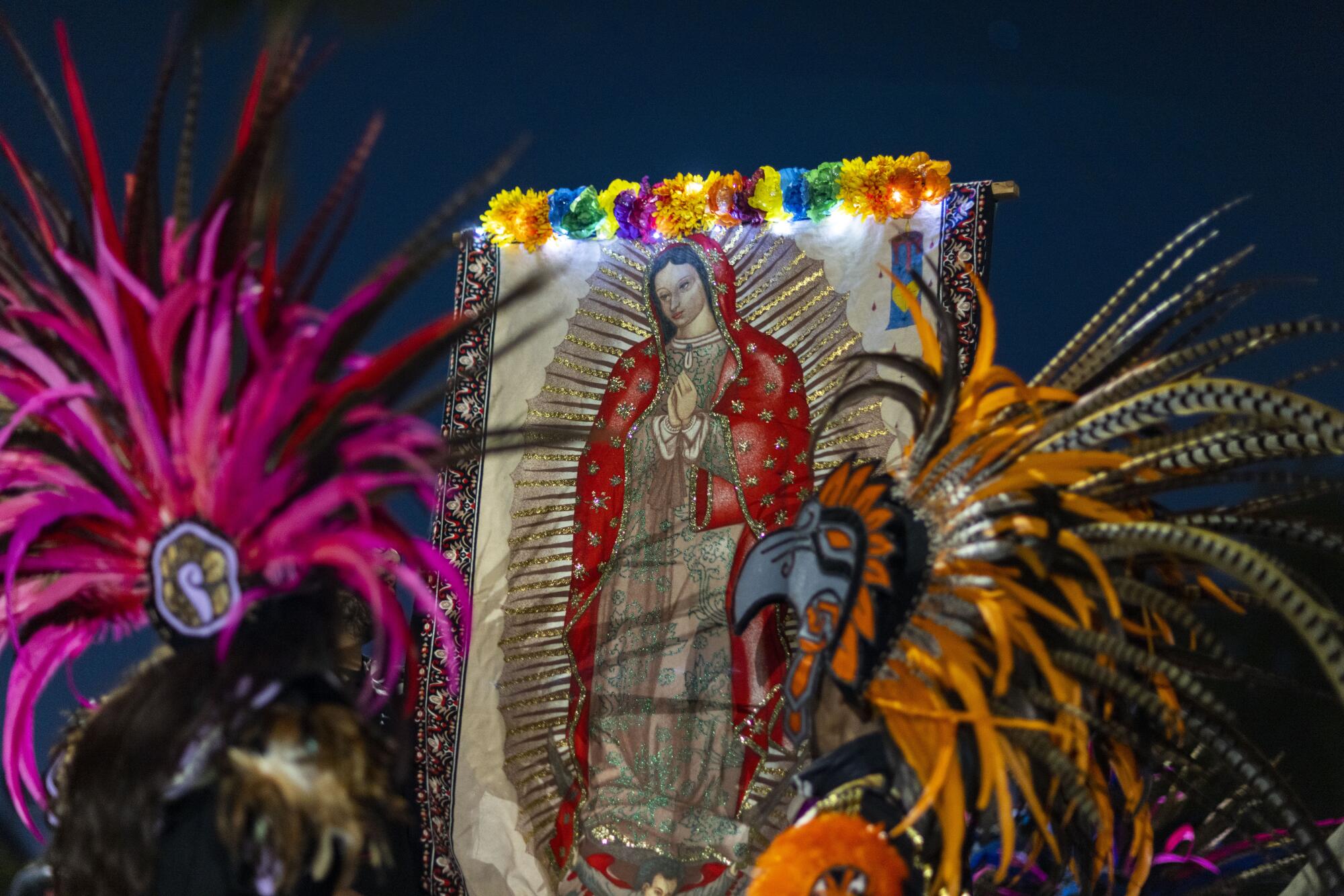
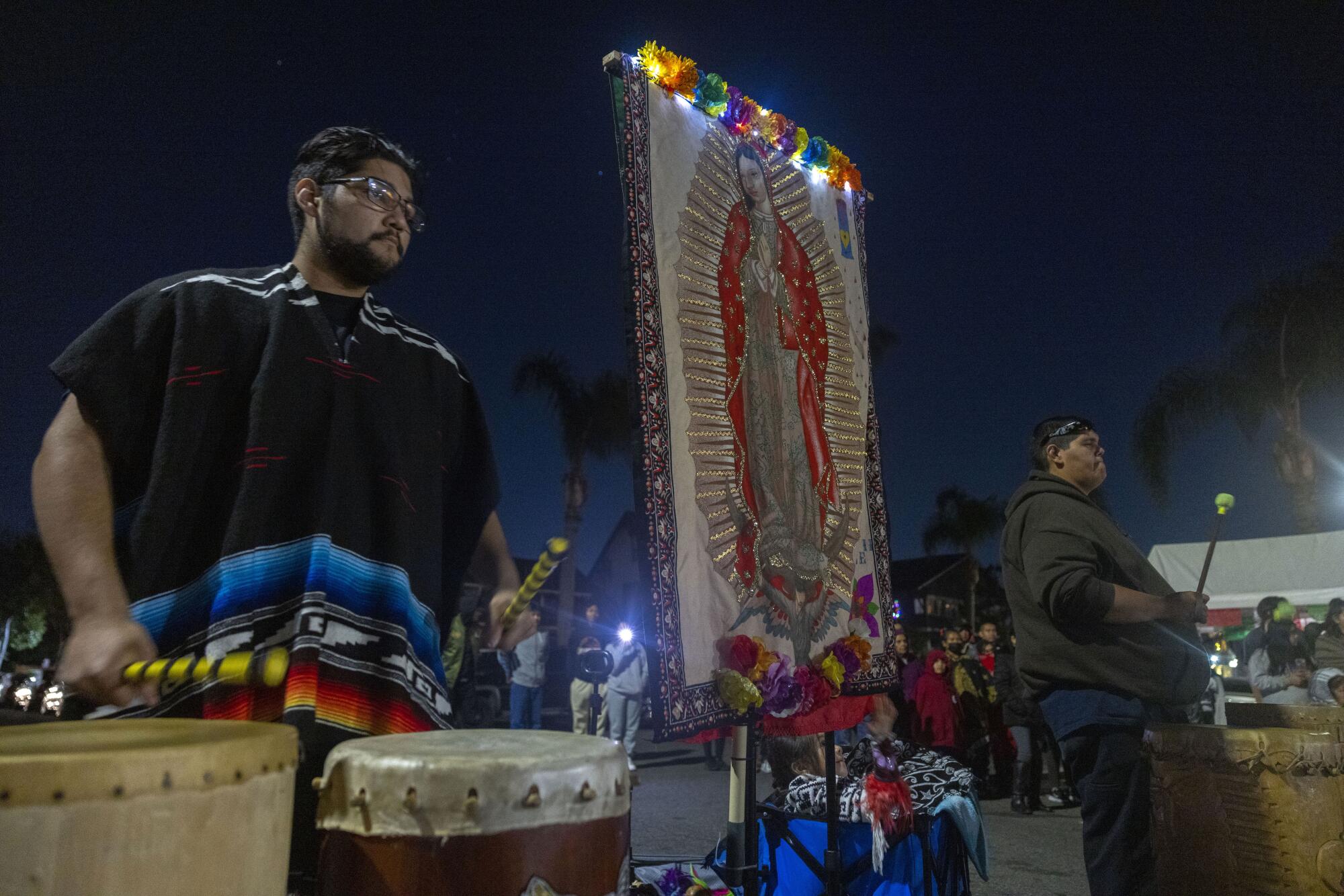
Soon after the praying is over, the children and adults take over a side street to see the Aztec dancers hit the pavement.
Ludivina Muñoz, a dancer of La Danza de Guadalupe, has been coming to Cantabrana’s home for four years.
“We are here to thank [La Virgen] for all the favors we have received and to ask that every year she grants us health to keep dancing,” said Ludivina. “No matter if it’s cold or if there is rain, we are always here dancing for her.”
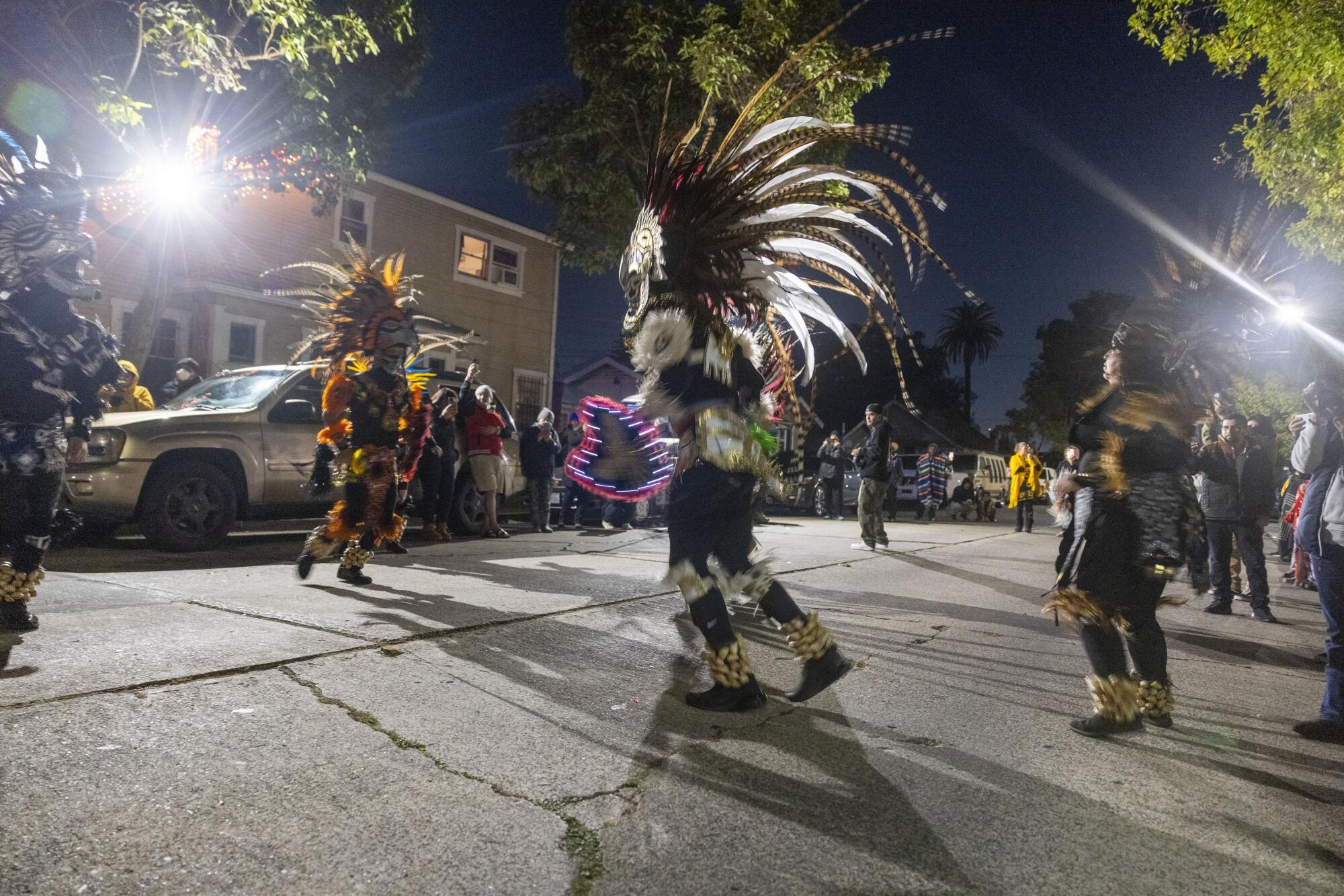
More to Read
The Latinx experience chronicled
Get the Latinx Files newsletter for stories that capture the multitudes within our communities.
You may occasionally receive promotional content from the Los Angeles Times.

